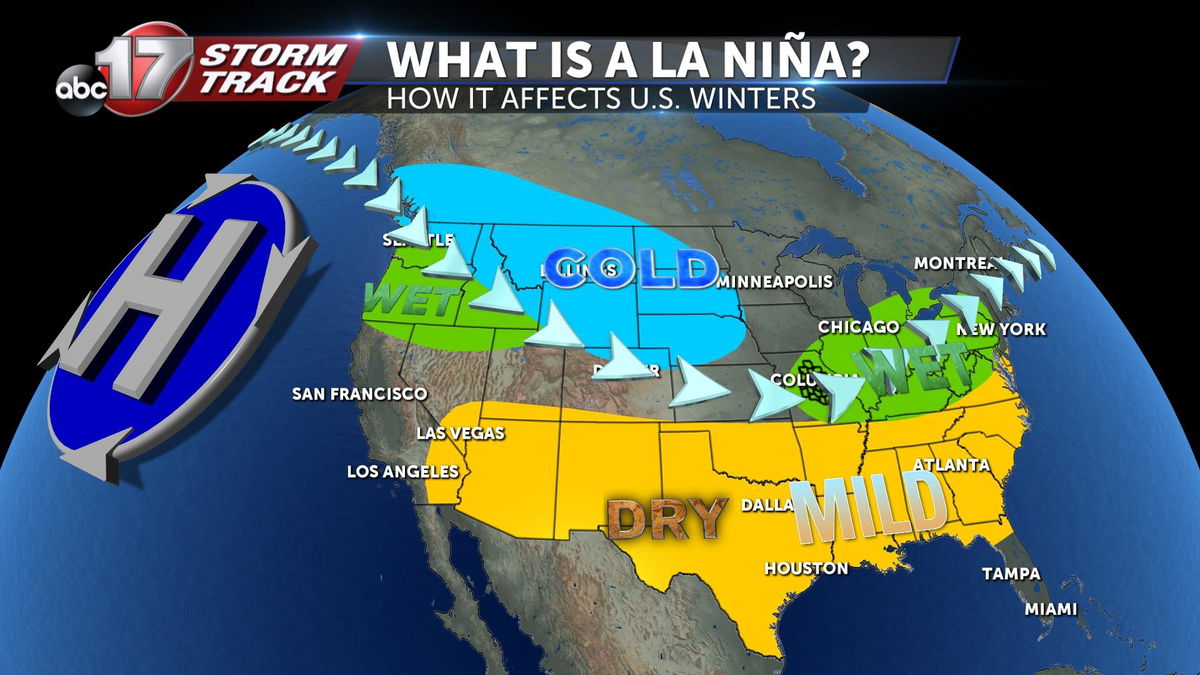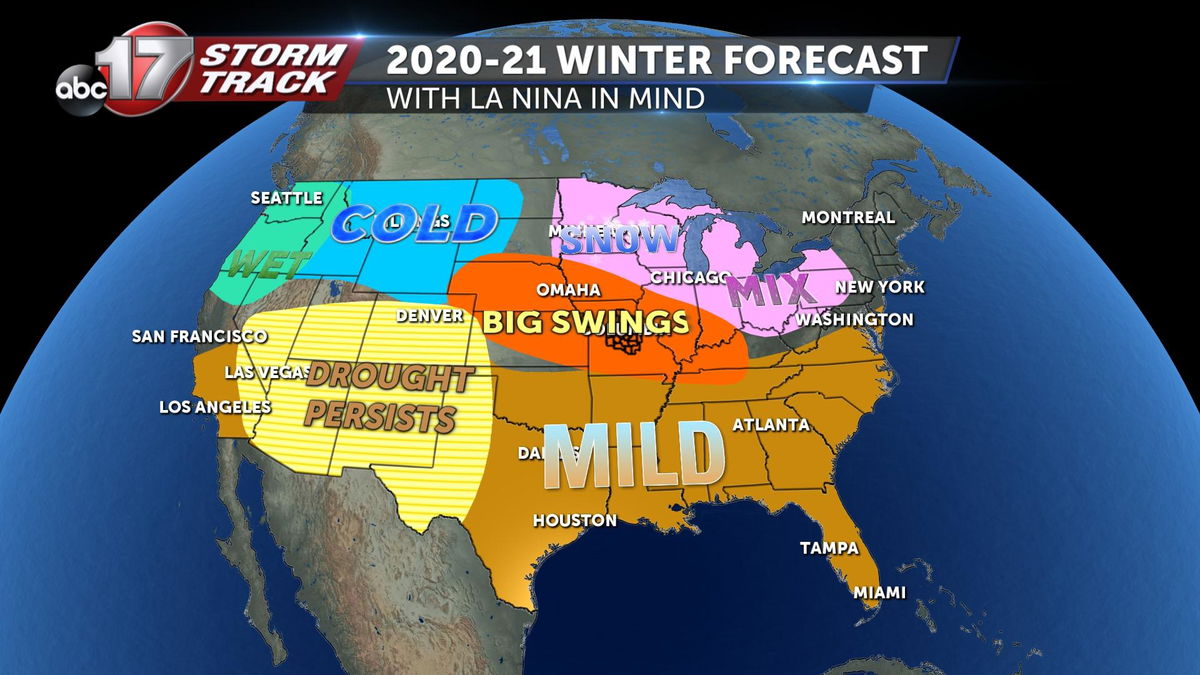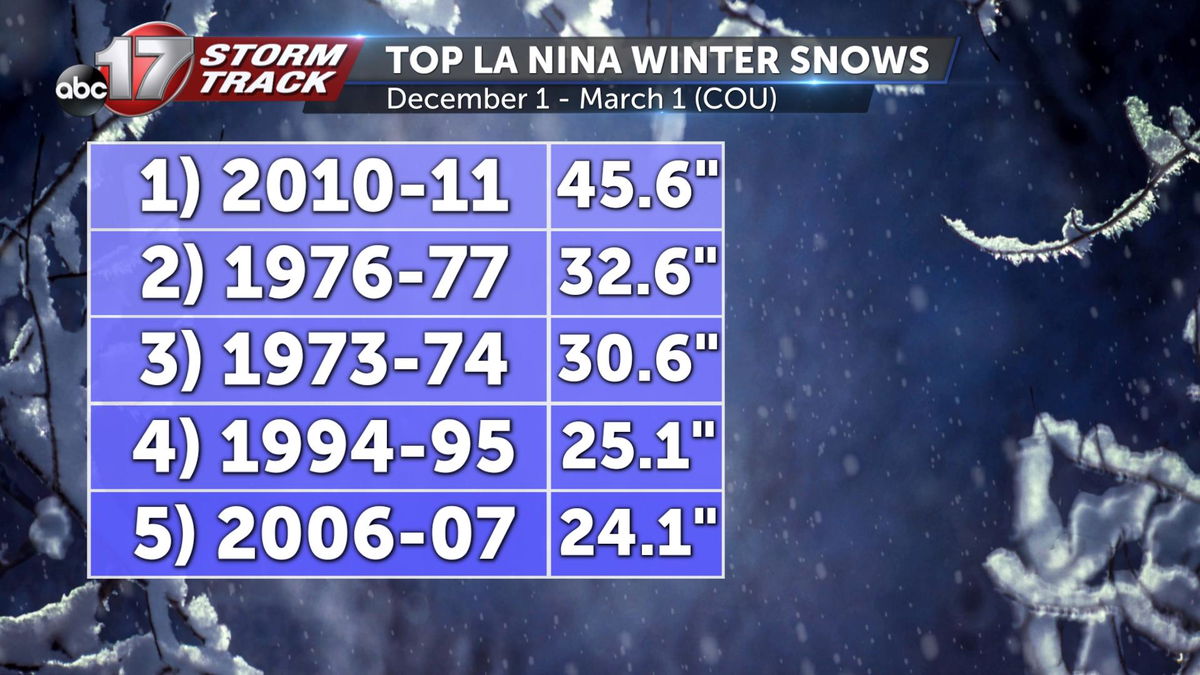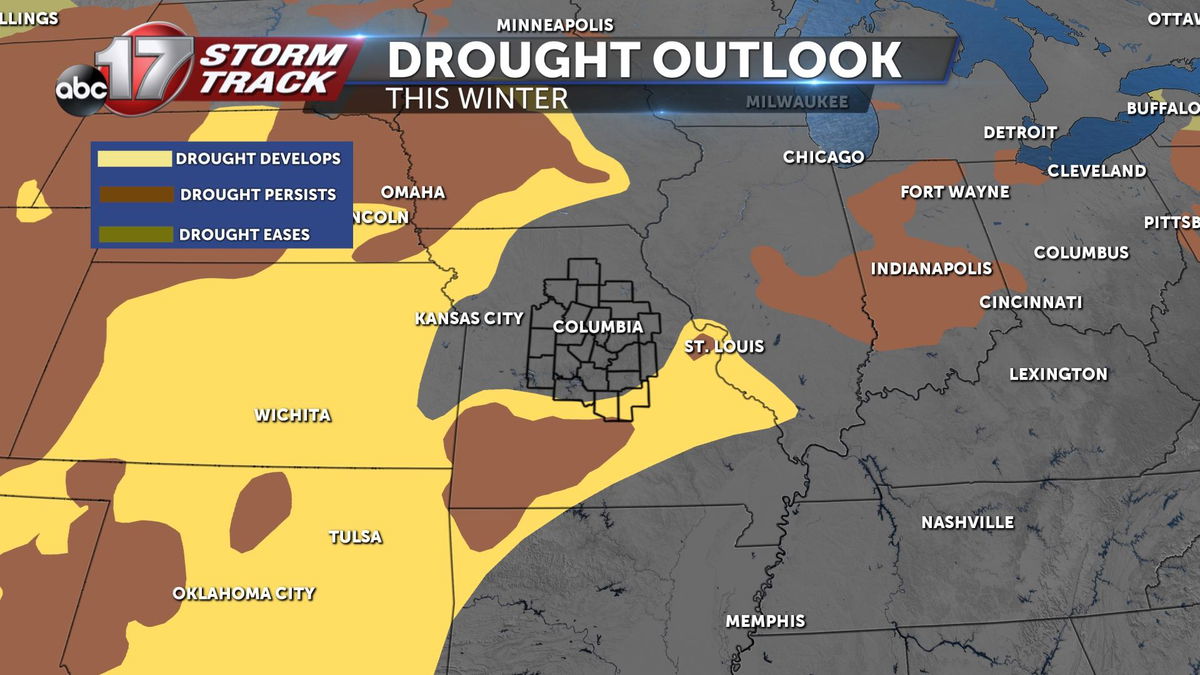La Nina pattern to drive winter weather in Mid-Missouri
We’re wrapping up a fairly variable fall after coming warmer and wetter than average in September, and finishing October cool and drier. November has had more above average days than normal or cooler than normal.
Temperature and precipitation swings can be blamed on La Nina, a global cycle marked by cooler than average ocean temperatures in the equatorial Pacific Ocean. This has also played a big role in our tropical season this year, with a record number of named storms, and the latest Category 5 storm ever recorded in Iota.
We entered a La Nina pattern earlier this year after coming off a fairly neutral 2019. As we progress into winter, the Climate Prediction Center forecasts an 85% chance of moderate to strong La Nina conditions through January.
What does that mean for our weather in Mid-Missouri?

In a typical La Nina pattern, the polar jet stream wraps around a strong blocking high spanning over the northern Pacific to our west. As the polar jet dives south across the northern U.S., wetter and cooler conditions persist across the Pacific Northwest through the northern Plains. Across the South, warmer and drier conditions usually play out. Since we’re right in the middle of these two drastically different zones, we can expect a mixed bag of weather, from wild temperature swings, to snow and ice, to potential severe weather.

It’s been a decade since we saw our last strong La Nina, but it’s hard to forget the winter of 2011 in Mid-Missouri. Several cities saw record snowfall on February 1-2 when a powerful storm dubbed the Groundhog Day Blizzard dropped more than 17” of snow in Columbia, with higher amounts to the west. Below zero temperatures followed that storm, with widespread power outages across the region.

The winter of 2010-2011 was the top snowfall-producing La Nina winter, with 45.6 inches of snow in Columbia for the winter season of December through February. 2006-2007 ranked fifth with 24.1 inches. Columbia typically averages 15.2” of snow with an average winter temperature of 32.2 degrees.

With La Nina expected to rule over the next few months, areas of drought could stick around across southern Missouri, along with slightly warmer than normal temperatures. Farther north, Mid-Missouri will likely see big swings with slightly higher than average precipitation.
